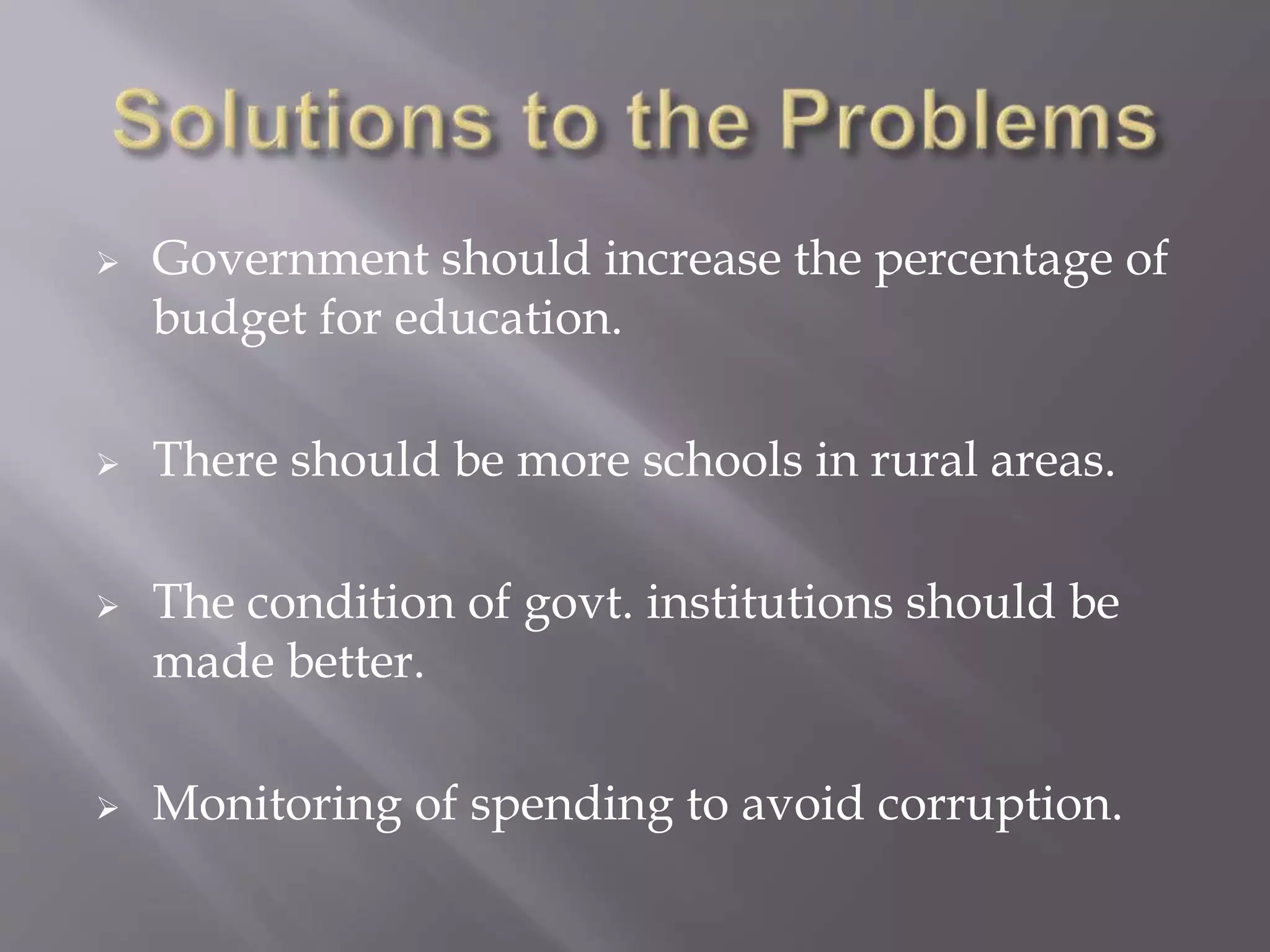Downloaded 123 times
















The document discusses education in Pakistan. It defines education and outlines Pakistan's constitution which calls for free compulsory secondary education. It describes the levels of education in Pakistan and the government and private sectors. It notes Pakistan's literacy rate of 58% and reasons for its poor education system like low funding, lack of standards, and poverty. The effects of illiteracy are then outlined like lack of development and unemployment. Finally, solutions presented include increasing education funding, improving schools, and providing free education.















Definition, constitution, literacy rate (58%), levels and sectors of education, causes and effects of poor education, and potential solutions.
Education is the systematic process of transferring knowledge and skills from teachers to students.
1973 Constitution Article 37-b states the commitment to eradicate illiteracy providing free compulsory secondary education.
Education system in Pakistan divided into five levels: Primary, Middle, Secondary, Higher Secondary, and University.
Education in Pakistan operates in two main sectors: Government and Private.
Literacy rate of Pakistan is 58%, ranking 160th globally, with a breakdown across provinces.
Factors contributing to poor educational standards include low budgets, lack of infrastructure, and rural access.
Additional causes include socio-economic disparities, unemployment, gender discrimination, and corruption.
Illiteracy impacts ethics, development, social interaction, unemployment, political stability, and economy.
Illiteracy severely hinders national development potential.
Recommendations include increasing education budgets, improving school conditions, and anti-corruption measures.
Suggestions for free education, awareness seminars, eliminating gender discrimination, and teacher training initiatives.